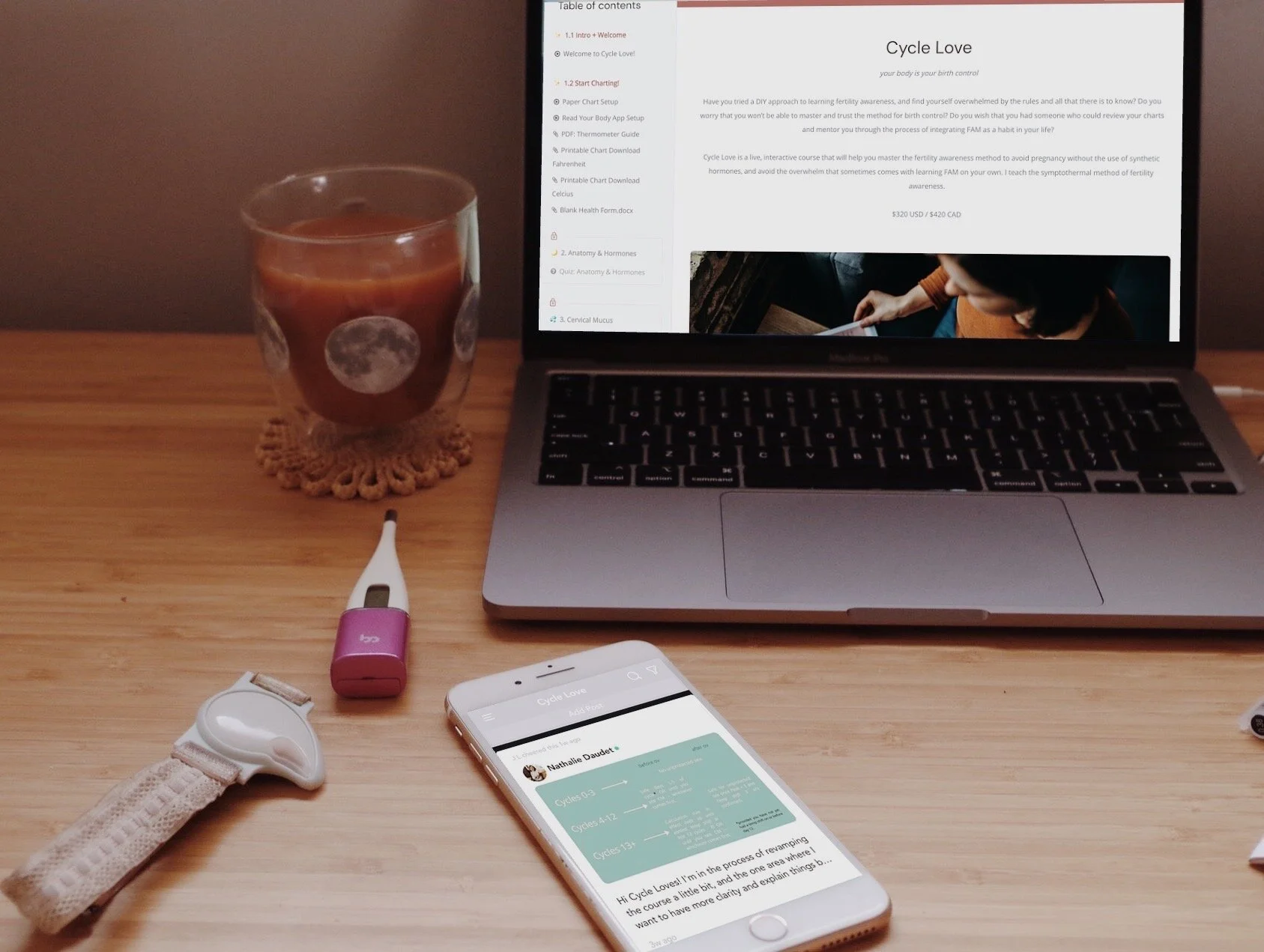Postpartum charting has been touted the wild wild west of charting for a reason. Getting the hang of fertility awareness in regular cycles is one thing, but once you add the uncertainty of postpartum into the mix it can be all the more challenging. Whether you’re currently pregnant or have recently given birth and are wondering what the heck is going on with your cycle, read on to learn more about making sense of your period postpartum.
Read MoreSymptothermal methods (like Sensiplan or the method from Taking Charge of Your Fertility) primarily use cervical mucus and basal body temperature, however some methods include optional cervical position checks. Some will include a calculation rule (like the Doering rule) to open the fertile window and some will rely on only cervical mucus.
Cervical Mucus Only Methods (like the Billings Ovulation Method or Creighton) use very specific categories or rules for cervical mucus to identify the fertile window. Methods like Justisse are cervical-mucus only with an optional BBT observation.
With all methods of fertility awareness, the general principle is the same: chart ovulation to identify your fertile window and don't have unprotected s*x in the fertile window if you don't wanna get pregnant! But how each of these methods combine, use and interpret the fertility signs may be different. This is why fertility awareness is lifelong and exciting learning - you think you've got the hang of it until you learn something brand new!
Maybe it’s because FAM educators have this illusion of having “perfect” cycles, because when I share about my experience with irregular cycles on social media, I get quite the response. I wanted to share a little bit about my experience with irregular and anovulatory cycles, and if you’re reading this, chances are you’ve experienced it too. There is really no such thing as a perfect cycle, no matter what you’ve been led to believe. Know that your body is working so hard to heal and regulate - having patience with yourself (when believe me, I know it’s hard) - is really what helped me stay sane during this time.
Read MoreThis is my honest take on training as a fertility awareness educator with FEMM. There are many other routes to become a FAM educator, depending on your preference in time commitment, price & type of method.
Back when I first learned fertility awareness, I was lucky enough to learn from an instructor. I remember the class vividly, It was a February morning in 2016, and about six of us were gathered in a conference room. I was taking part in a Serena class (a branch of symptothermal natural family planning), which was the only option I had to learn FAM locally. I had a vague idea about how fertility awareness could be used for birth control, but as the class started I slowly learned how little I knew about fertility awareness and about even more, about my body. As we worked through the class material that morning, I was simultaneously becoming more overwhelmed and more excited. The question that kept popping into my mind was why weren’t more women being taught this vital information about their bodies?
Read MoreThe basis of the fertility awareness method (FAM) is learning how to read the very observable signs in your body to identify your fertile time.
Our bodies give us messages about our overall health through cycle biomarkers, which we learn to read and then chart with FAM. It is a daily practice of noticing and charting what has always been there, we just never knew what it was for or how to interpret it!
Fertility awareness is the practice of charting your hormonal biomarkers to identify your fertile time. Biomarkers are signs that your body is giving you to let you know that you are fertile, and the possibility of pregnancy is there. Women can only get pregnant for approximately 7 days per cycle (however the fertile window may be longer, due to the fact that we can’t predict ovulation.
Read MoreOne of the biggest considerations for choosing a method of contraceptive is effectiveness. And this makes sense! We want to assess the reliability of whatever method we choose, to do the job it’s meant to do: prevent pregnancy.
Read MoreConfused about cervical mucus and how it relates to fertility? Cervical mucus is your body’s real-time indicator of fertility, helping you understand when your fertile window opens and closes. In this comprehensive guide, you’ll learn how to track cervical mucus, what different types of mucus mean (like eggwhite, creamy, and sticky), and how to use this information to practice the Fertility Awareness Method (FAM) effectively. Whether you’re trying to conceive or avoid pregnancy naturally, understanding your mucus patterns is key to unlocking deeper body awareness.
Read MoreFor some folks, cervical mucus tracking feels like one of the most challenging aspects of fertility awareness. There is a learning curve involved in observing this fertility sign. It’s just not something we’re told from a young age to pay attention to! Until you pull out your own unique pattern, it can feel overwhelming or confusing. I promise, you will get the hang of it. Here are a few tips to make your learning process easier.
Read MoreTracking basal body temperature, or BBT, is one essential element of the symptothermal method of fertility awareness. By tracking your BBT, which rises slightly after the egg is released, you can track ovulation. For a long time, only oral basal body thermometers were available for those wanting to use the fertility awareness method (FAM) for birth control or conception. In recent years, however, many alternative thermometer options have become available. How do you know which to choose? Read on to learn more.
Read MoreCharting your biomarkers in an irregular cycle can help you diagnose or offer clues as to the root cause of the cycle irregularity. Having all this info can be super helpful if you're working with a healthcare practitioner, for example. Tracking will also help you trace any changes in your chart as you make lifestyle changes.
Read MoreReal women who use FAM share their stories of how fertility awareness and body literacy has impacted their lives.
Read MoreThe menstrual cycle can be broken up into two parts. The first half of the cycle, the follicular phase, is from the first day of your bleed all the way up until ovulation. The follicular phase varies in length, and can be impacted by many factors. On a GOOD day, the follicular phase is unpredictable, and in the current crisis we’re in, you may see even more erratic follicular phase patterns.
Read More
























